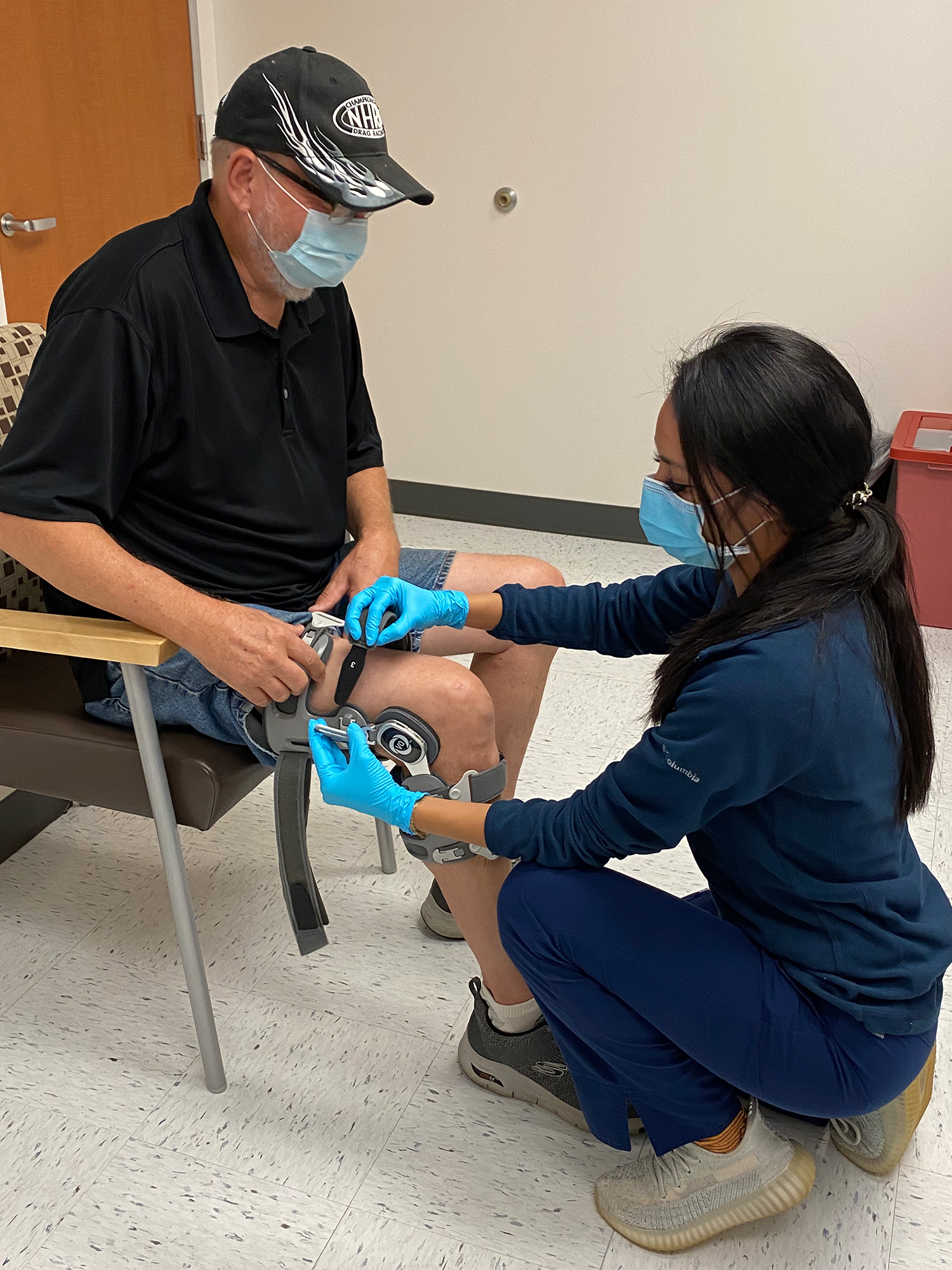
Braces for Osteoarthritis Pain
Several types of medical braces can be referred to as durable medical equipment (DME). The most common types are back braces, knee braces, night splints for plantar fasciitis, wrist guards for carpal tunnel syndrome, and cervical collars for whiplash injuries related to car accidents.
Osteoarthritis knee unloader brace
These braces are specifically designed for patients who have arthritis on the inside aspect of the knee joint is called the medial compartment. This is the most common site of knee arthritis, one that leads to the joint deformity that makes you look bowlegged. This process can become a vicious cycle as it develops because the load point on the knee shifts almost entirely to the medial compartment, causing more wear and tear where you don’t need it.
A knee unloader brace reduces the majority of the load on the medial compartment by literally straightening the knee joint to look more like a normal “straight” knee. When wearing the brace, the joint space opens medially and creates a gap allowing you to walk and perform an activity without wearing on the medial compartment where the cartilage is thin or worn away. This can prevent the bone-on-bone feeling you may have with weight-bearing activity and exercise.
The brace also works the same way if you are knock-kneed. In this case, the opposite side of the joint has started to thin called the lateral compartment and the medial compartment remains unaffected by arthritis.
Arthritis Relief & Vascular Centers have many patients who can go back to playing tennis and jogging as long as they are wearing one of these knee braces. It can be worn as long as a patient may need it throughout the day. There is no concern for muscle atrophy for using a knee brace too much, as this device supports the bony structure of the joint and not the muscle. The muscles continue to function the same with or without the brace.
Back Braces
Lumbar back braces, referred to as lumbosacral orthotics, give patients an extreme advantage in fighting their back pain. Lumbar braces can provide enough support to the lumbar discs that the internal disc pressure is reduced enough to let the large spinal muscles relax, providing relief from pain and spasms. This not only helps speed the recovery of the problem but also allows you to be more active with hopefully little to no pain.
Night Splint AFO for Plantar Fasciitis
A key component in treating plantar fasciitis is the ankle-foot orthotic (AFO) night splint, which keeps the foot flexed at 90 degrees during the night. The AFO maintains a proper stretch on the calf muscles and the plantar fascia, as these would otherwise shorten overnight and lead to immense discomfort when you take your first few steps upon rising from bed in the morning.
Wrist Splint for Carpal Tunnel
Wrist splints are often necessary to help treat the symptoms of carpal tunnel syndrome, as it’s positioned in a way that gives relief to the irritated median nerve irritated within the carpal bones of the wrist. Sometimes, just by naturally allowing the persistent irritation to diminish, symptoms can resolve without surgery. Wrist splints can be worn at night or even in more severe cases during the day.
Cervical Collar
Following whiplash injuries related to car accidents or severe neck pain/spasm related to a cervical disc herniation, cervical collars – whether hard or soft – can provide tremendous pain relief. This occurs by reducing enough pressure on the injured disc or immobilizing the neck enough to let the persistent muscle spasms relax. In either case, a cervical collar may be just what you need to start feeling better faster.